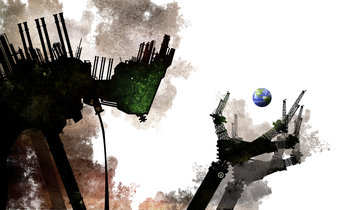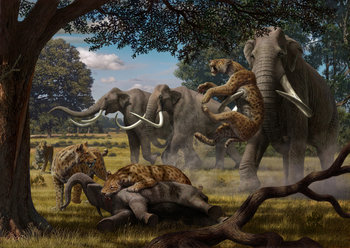
How It Works
Biochar is produced by slowly burning vegetation in a low-oxygen environment. This process produces energy, biochar, bio-oil and syngas. Biochar is a fine grained charcoal that can be used to enrich soil. It essentially captures carbon in a state that remains stable for thousands of years. Bio-oil is a fuel that's similar to oil. Syngas contains hydrogen, carbon monoxide and carbon dioxide.The point of biochar production is that the biochar captures up to 50% of the carbon in the plants in a form that is both useful and highly stable. Plants capture carbon dioxide from the air but usually release methane and carbon dioxide when they die. Biochar is a way of capturing carbon and locking it away in the soil for thousands of years.Biochar is naturally found in soil. There is currently about 1,500 gigatons of carbon trapped in soil up to 1 meter in depth. That's more carbon than is currently in the atmosphere.If biochar were produced at great scale, it could potentially reduce atmospheric carbon dioxide enough to slow global warming.Terra Preta
Terra Preta is a fertile black soil found in the Amazon Basin that is the result of historical human production of biochar. It was produced because the soil in the region is particularly infertile. The biochar helps the soil to retain water, nutrients and minerals. It also supports the growth of beneficial microorganisms.Large areas of human produced black soil are also found in England and Sweden.Potential
Global agriculture produces a great deal of excess biomass that is often burned or allowed to decompose releasing methane and carbon dioxide. Additionally, an estimated 200–500 million people globally use slash-and-burn farming methods whereby forest is burned to create a field that is used for a short time. If these two activities were converted to biochar production on a global basis, they would represent a significant carbon sink that could absorb several gigatons of carbon each year.| Overview: Biochar | ||
Type | Carbon Sequestration | |
Definition (1) | Charcoal that is used to sequester carbon and enrich soil. | |
Definition (2) | A charcoal that is produced by slowing burning biomass in a low-oxygen environment. | |
Value | A scalable carbon sequestration technique that produces energy and a valuable soil amendment. Reasonably low-tech and deployable in developing countries. | |
Potential Scale | Gigatons of carbon per year | |
Related Concepts | ||





























